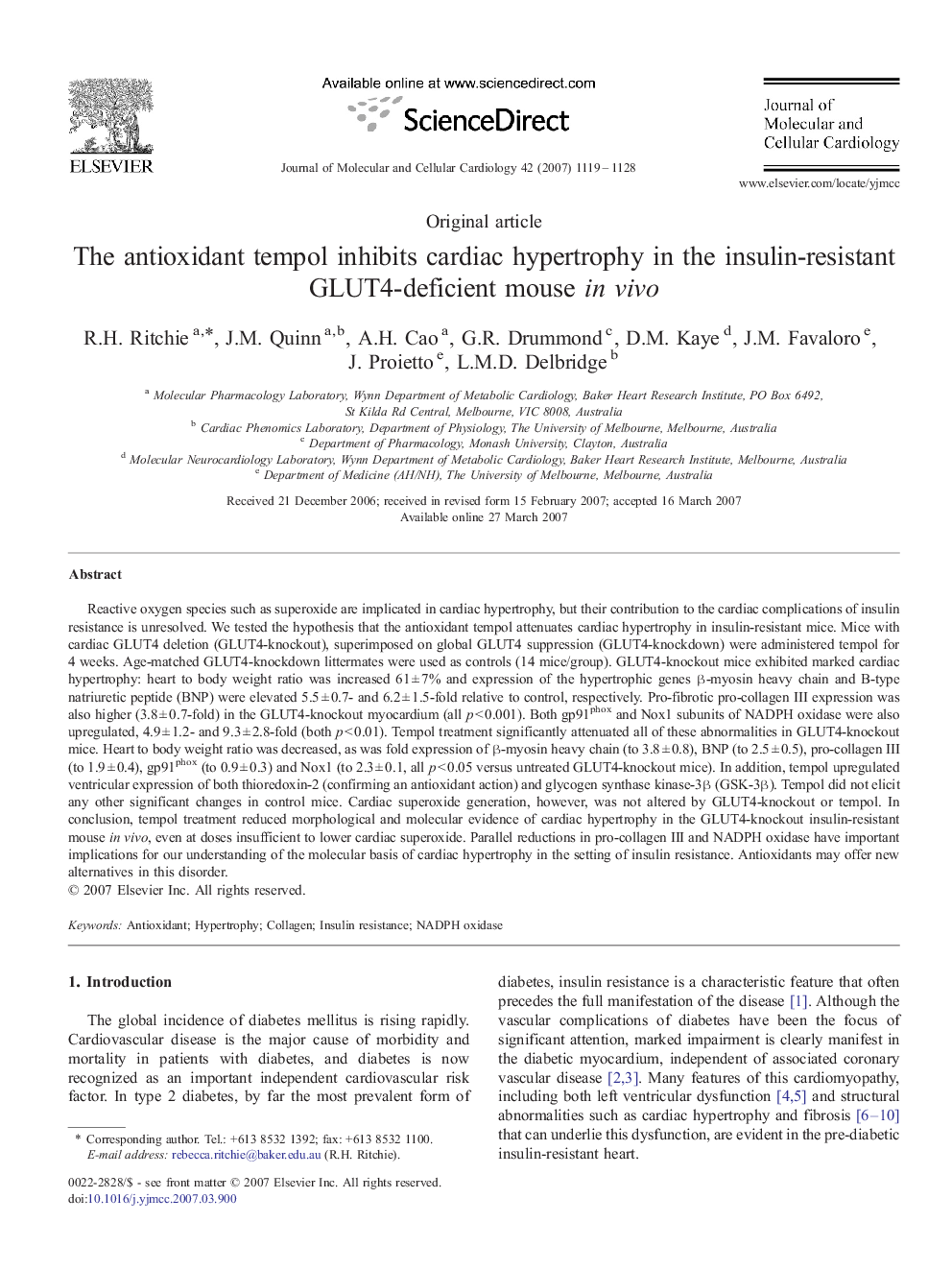| Article ID | Journal | Published Year | Pages | File Type |
|---|---|---|---|---|
| 2192156 | Journal of Molecular and Cellular Cardiology | 2007 | 10 Pages |
Reactive oxygen species such as superoxide are implicated in cardiac hypertrophy, but their contribution to the cardiac complications of insulin resistance is unresolved. We tested the hypothesis that the antioxidant tempol attenuates cardiac hypertrophy in insulin-resistant mice. Mice with cardiac GLUT4 deletion (GLUT4-knockout), superimposed on global GLUT4 suppression (GLUT4-knockdown) were administered tempol for 4 weeks. Age-matched GLUT4-knockdown littermates were used as controls (14 mice/group). GLUT4-knockout mice exhibited marked cardiac hypertrophy: heart to body weight ratio was increased 61 ± 7% and expression of the hypertrophic genes β-myosin heavy chain and B-type natriuretic peptide (BNP) were elevated 5.5 ± 0.7- and 6.2 ± 1.5-fold relative to control, respectively. Pro-fibrotic pro-collagen III expression was also higher (3.8 ± 0.7-fold) in the GLUT4-knockout myocardium (all p < 0.001). Both gp91phox and Nox1 subunits of NADPH oxidase were also upregulated, 4.9 ± 1.2- and 9.3 ± 2.8-fold (both p < 0.01). Tempol treatment significantly attenuated all of these abnormalities in GLUT4-knockout mice. Heart to body weight ratio was decreased, as was fold expression of β-myosin heavy chain (to 3.8 ± 0.8), BNP (to 2.5 ± 0.5), pro-collagen III (to 1.9 ± 0.4), gp91phox (to 0.9 ± 0.3) and Nox1 (to 2.3 ± 0.1, all p < 0.05 versus untreated GLUT4-knockout mice). In addition, tempol upregulated ventricular expression of both thioredoxin-2 (confirming an antioxidant action) and glycogen synthase kinase-3β (GSK-3β). Tempol did not elicit any other significant changes in control mice. Cardiac superoxide generation, however, was not altered by GLUT4-knockout or tempol. In conclusion, tempol treatment reduced morphological and molecular evidence of cardiac hypertrophy in the GLUT4-knockout insulin-resistant mouse in vivo, even at doses insufficient to lower cardiac superoxide. Parallel reductions in pro-collagen III and NADPH oxidase have important implications for our understanding of the molecular basis of cardiac hypertrophy in the setting of insulin resistance. Antioxidants may offer new alternatives in this disorder.
